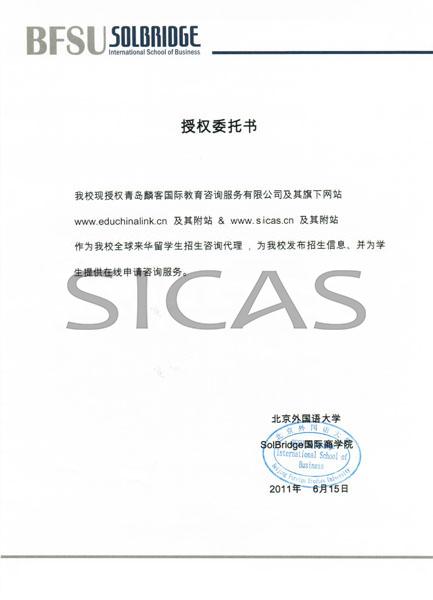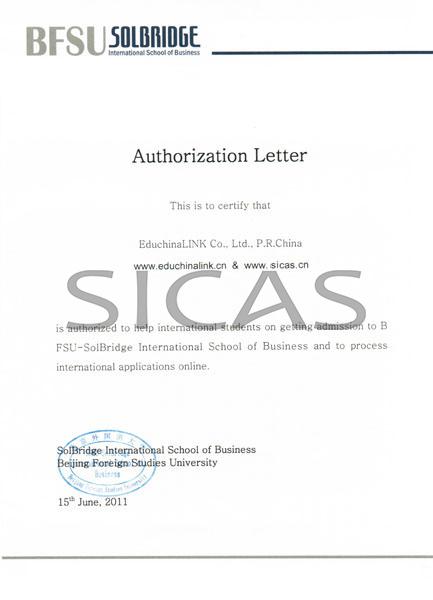Beijing Transportation Guide
There are numerous ways for you to get here and there in Beijing as well as travel around the country. Some of the top choices include flight service, train, metro system, bus or taxis. The following contents will make your arriving at your school smooth and easy while also provide you numerous useful tips for travel within the city or around the country. You can click the following links to see:
1) Beijing Capital International Airport
2) How to Get to Your University from BCIA
3) Daily Transportation Guide
4) Travel around China
Upon arrival in Beijing Capital International Airport
It is no doubt that the Beijing Capital International Airport is the largest airport in China, in which more than 1,000 flights arrive and depart every day. It connects Beijing with 54 cities in 39 countries by 757 domestic, 21 regional and over 100 international air routes. Customers can conveniently process the ticket-booking issue of over 40 foreign airlines through their offices in Beijing.
Introduction
Beijing Capital International Airport is situated in the Shunyi District of the city, about 25 km (about 15.5 miles) northeast of Tiananmen Square, and is China's busiest and most important international airport. With the use of Terminal 3 in 2008, there are currently three terminals in BCIA.

Starbucks and Haagen-Dazs in Terminal 3. How much more international can you get!?
Terminal 1
Just occupying an area of 60,000 square meters, Terminal 1 of Beijing Capital Airport has the longest history originating from January, 1980. While the larger T2 and T3 were put into use successively, T1 has been the operational base for Hainan Airlines' domestic flights. Currently, there is a convenient passage linking T1 and T2, which just takes 5 minutes on foot.
Terminal 2
Covering an area of 336,000 square meters, T2 of Beijing Capital Airport was originally built on October, 1995 and put into use on November, 1999. Although it is the extension project for T1, T2 was built much larger than the previous one. Before the opening of T3, it played the vital role in the aerial transportation in China. Currently, T2 is the busiest terminal taking on the domestic airlines to and from Beijing although the Air China in T3 supplies frequent domestic flights. On the other hand, housing over 30 international airlines companies, this terminal is also one of the major ports for passengers to entry into and exit from China.
Terminal 3
T3 of Beijing Airport has been attracting much public attention since coming into use in 2008. It has a unique modernistic design and is the second largest airport terminal in the world, only after Terminal 3 of the Dubai International Airport. Some 26 national and international airlines have moved into this building that runs 2900 meters long from north to south.

There are some useful tips which will help international students get though the capital airport processing.
The following procedure is for international arrivals:
1. Flight Arrival
2. Inspection & Quarantine
3. Exit and Entry Frontier Inspection
4. Baggage Claim
5. Customs Inspection
6. Leaving the Airport
For more information about arrivals & departures and transfers etc, please click the link below to download the Passenger Guide from the Official Website of Beijing Capital Airport: http://en.bcia.com.cn/pdf/all-EN.zip

Previews of the Guide Book
Air Ticket Booking
There are various methods to book the air ticket.
First, you may get it through the largest flight booking center which is situated in the China Aviation Building at 15 West Chang'an Avenue near Xidan.
Second, you may book the air ticket in the booking offices at major hotels,
Third, you may get the fast and reliable booking service from a lot of travel agencies.
Fourth, it’s also a good choice to book your air-tickets through the booking counters which was established by various airlines in the Beijng Capital Airport.
How to get to your university from BCIA?
Most international flights land at either Terminal 2 or Terminal 3. There are four ways to get from the airport to your university: SICAS's airport pick-up service, the Airport Express train which connects to the city's subway system, airport shuttle bus, and by taxi. You can click here to see the transportation guide to some certain universities in Beijing.
SICAS Airport Pick-up Service
If you arrive in BCIA, you can book an airport pick-up service with SICAS.
Contact us
By Express Railway

The Airport Express Line of the Beijing Subway serves the airport from Terminal 3 to Terminal 2 and then takes passengers to Dongzhimen via Sanyuanqiao. This line was opened just prior to the 2008 Summer Olympics. It carries passengers to the airport in twenty minutes from the city center, covering a distance of 28 kilometers
By Airport Shuttle Bus
It is convenient and reasonable for international students to take an airport shuttle to travel to the urban area. Currently, there are nine major routes.
Line 1 is from BCIA to Fangzhuang Route
Line 2 is from BCIA to Xidan Route
Line 3 is from BCIA to Beijing Railway station
Line 4 is from BCIA to Gongzhufen
Line 5 is from BCIA to Zhongguancun
Line 6 is from BCIA to Wangfujing
Line 7 is from BCIA to Beijing West Railway Station
Line 8 is from BCIA to Shangdi
Line 9 is from BCIA to Tongzhou Route
Tip: The downtown shuttle cost RMB 16/person and the tickets office located separately in:
T1: Gate No. 7 (inside) on F1
T2: Gate No. 9 to No.11 (outside) on F1
T3: exit of Zone A, opposite of the exit of Zone C onF2; next to Gate5, 7&11 on F1
Take a Taxi
It is both convenient and comfortable to ride a taxi to reach downtown area. A cab ride from BCIA to downtown Beijing will cost you around RMB 100 and the whole journey will take about 40—90 minutes depend on the destination and traffic condition. Taxi prices in Beijing are all measured by the taxi meters and there are about 70,000 taxis in use in Beijing. Usually, taxis in Beijing have two different price categories: 1.6 yuan/km and 2.00 yuan/km charging starting at 10 yuan daytime and 11 yuan after 11 p.m. It’s a better idea to bring along the address in Chinese of your destination as you are poor in Chinese. Most taxis in use are of Hyundai and Santana and a legal taxi’s plaque starts with the number B.
To find out transportation guide to a specific university in Beijing click here.
Daily Transportation Guide
Subway
The Beijing Subway system opened in 1971, and only consisted of two lines until the opening of the northern arc Line 13 in 2002. Due to recent expansion, the evolving system now has nine lines, four of which are underground, and five are above ground. Line 1, along with its new eastern expansion known as the Batong Line crosses almost all of urban Beijing from east to west. Lines 4 and 5 serve as two north-south axial lines.
Official website: http://www.ebeijing.gov.cn/feature_2/Subway_Tour/
The Beijing Subway system is an extremely efficient and cost-effective way to get around in Beijing. There is a flat fare of RMB 2 with unlimited transfers except for the Airport Express line, which costs 25 RMB per trip. Generally, the first train runs at 05:00, and the last train runs at about 23:00. Exact times vary from line to line.

The map of Beijing subway ( beijing_subway_map.png ) (click to see a lager map)
beijing_subway_map.png ) (click to see a lager map)
Bus
Busses are the most preferred mode of transportation in Beijing. The prices for bus transportation are much cheaper than the taxis. The complex network can get you to almost every corner of the city with a price under RMB 2. Buses marked with AC have air conditioner operating and will make your journey more comfortable. The only drawback could be the language. The destination and the route directions are all pasted in Chinese language, on the front and at the back of the busses. A foreigner would find it extremely hard to locate the exact route of the bus. For somebody who could understand and read Chinese language, a bus transportation ride is probably the best form of communication inside Beijing. You can either visit Google online map or Beijing Bus Official Website to check the specific routes.
Beijing's urban transport is dependent upon the six "ring roads" (simplified Chinese: 环路) that successively surround the city, with the Forbidden City area marked as the geographical center for the ring roads. The ring roads appear more rectangular than ring-shaped. The 1st Ring road is not officially defined. The 2nd Ring Road is fully located in Beijing's inner city areas. Ring roads tend to resemble expressways progressively as they extend outwards, with the 5th Ring Road and 6th Ring Road being full-standard National expressways - linked to other roads only with interchanges. Expressways to other regions of China are generally accessible from the 3rd Ring Road outward.
Travel around China
Beijing is connected via road links from all parts of China as part of the National Trunk Road Network. Nine expressways of China connect with Beijing, as do 11 China National Highways. Due partly to its design as an ancient capital, roads in Beijing often are in one of the four compass directions.
Travel by Train
Most Chinese people like to travel by train for the domestic trip. It offers not only good chances to meet and make friends with people all over the country, but also the beautiful views from the train windows.
You can travel to almost all the main cities in China from four railway stations in Beijing, namely Beijing Railway Station, Beijing West Railway Station, Yongdingmen Station and Xizhimen Station. The Beijing West Railway Station is well known to be the Asia's largest, modern and well-equipped rail terminal. The tickets are divided to four types, hard seats, soft seats, hard sleepers and soft sleepers.

Beijing Railway Station, Beijing West Railway Station, Yongdingmen Station and Xizhimen Station
Passengers can choose the proper kind of ticket according to their journey distance and economic conditions. The hard seats are the cheapest, while the soft sleepers being the most expensive. The difference between the soft sleepers and the hard sleepers is that: for soft sleepers, 4 people share one compartment. For hard sleepers, 6 people share one open compartment without door. That’s why the soft sleepers are about 20% more expensive than the hard sleepers. You’d better to buy the sleeper ticket for any trip longer than 12 hours in order not to be too tired. Hot water is offered on the train. It is advised to you to take your own food on the train, such as instant noodles, fruit and sausages.

How to Book Train Ticket in Beijing
In China, buying a ticket is sometimes both confusing and time-consuming, especially during the holiday peak seasons. So, it’s reasonably for you to pay a small booking charge to your hotel travel service or front desk to get the ticket-buying service from them. Foreigners and overseas Chinese can enjoy the priority to buy ticket in the special counters in Beijing Railway Station and Beijing West Railway Station. Usually, the railway stations can sell the tickets up to 6 days in advance.
SICAS Reminder: Remember to bring your passport when booking or buying tickets.



















